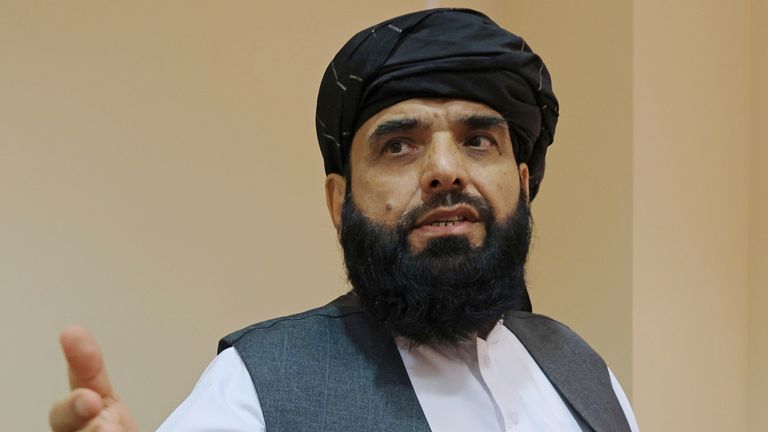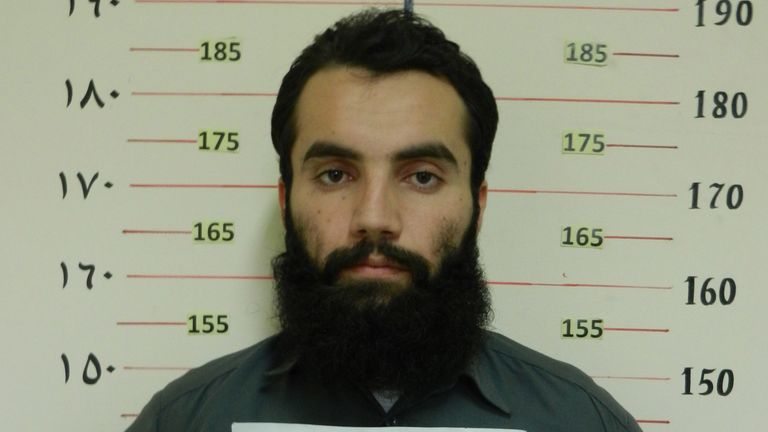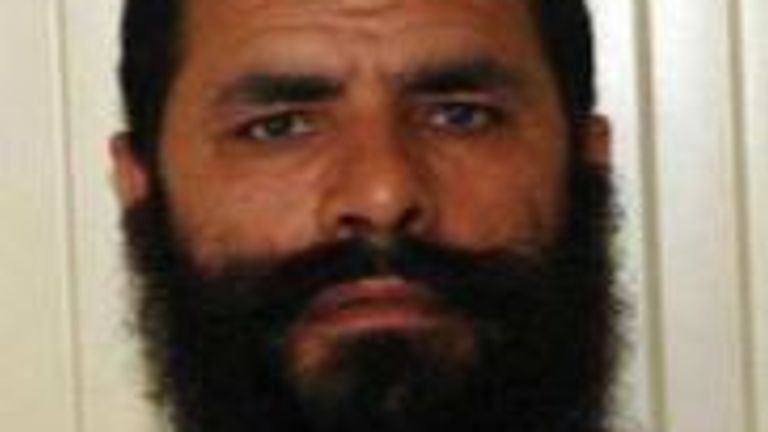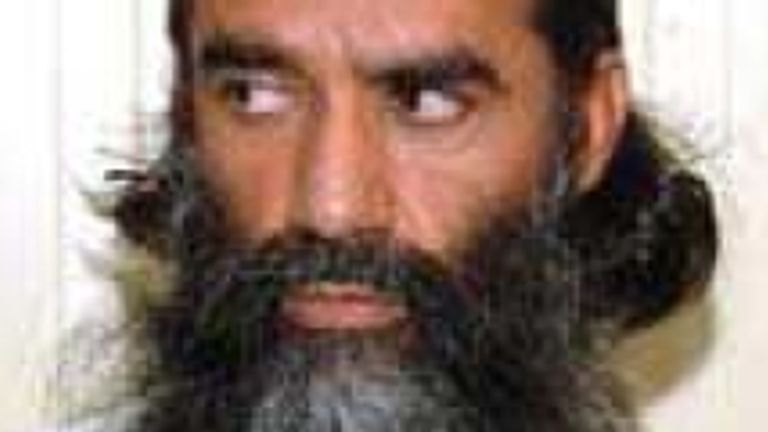Home » World News »
Afghanistan: Who’s who in the new Taliban’s inner circle
A senior Taliban spokesman announced on Wednesday that its leaders will show themselves to the world, a step change from the shadowy world they had previously inhabited.
For the first time on Tuesday, the world saw a leader who had only ever spoken to western media by phone, although they knew his name well.
“Slowly, gradually, the world will see all our leaders, there will be no shadow of secrecy,” the senior Taliban official told Reuters on Wednesday.
It comes amid claims by Taliban spokesmen – they are all men – that there will be no reprisals, women’s rights (under Islamic law) will be respected, terrorists will not be able to operate from Afghan soil and law and order will be maintained.
But who is in the inner circle of the new Taliban’s leadership?
Sheikh Hibatullah Akhundzada
The group’s supreme commander, designate Emir and commander of the faithful, has yet to be seen in public since the Taliban swept to power in Kabul.
A former member of the mujahideen resisting the Soviet invasion, Akhundzada became one of the earliest members of the Taliban in 1994 and held several offices during its period in power – especially in guiding its religious direction and promotion of “virtue”.
After the US invasion in 2001, he became the chief justice in the organisation’s Sharia courts and an advisor to Mullah Omar, the Taliban’s founder.
He is reported to have remained in Afghanistan throughout the group’s period out of power and settled many disputes in the group with fatwas, until, after the killing of the group’s second leader Mullah Mansour by a US drone strike in 2016, he was appointed leader, but he may also have been active in Pakistan.
Among the last times he was heard from was in May, at Eid al Fitr, when he spoke through a Taliban spokesman, according to Pakistan’s Tribune newspaper, to urge Afghans to come together for the “redevelopment of our homeland” and promised an “Afghan-inclusive Islamic system”, without the risk of rights being violated.
Mullah Abdul Ghani Baradar
Baradar has been a key figure in the negotiations that led up to the deal with the Trump administration that prompted the US pullout, paving the way for the Taliban advance.
Seen meeting officials in Doha, China and Moscow, the Taliban’s deputy commander of the faithful and apparent political leader was only able to do so because he was freed from prison in Pakistan in 2018 – shortly after Mr Trump’s Afghanistan envoy Zalmay Khalilzad visited Islamabad – having been in jail since 2010.
His role as negotiator is expected to continue as the Taliban says it seeks an “inclusive, Islamic” government, but many remain sceptical, considering his past.
One of the co-founders of the movement, Baradar is the only surviving Taliban leader to have been personally appointed deputy by Mullah Omar, giving him near-legendary status among the faithful.
On Tuesday, he landed in Kandahar, the birthplace of the Taliban movement, ending 20 years of exile, having previously fled into neighbouring Pakistan after the US-led invasion in 2001.
During the group’s 1996-2001 rule, he did not have an official government role but fought alongside Omar as he led the Taliban to seize power in 1996 and during the insurgency in later years.
Zabihullah Mujahid
The Taliban’s main spokesman after the fall of Kabul, who set up a news conference from the presidential palace in the aftermath of the takeover, is the public face of the group attempting to present a moderate image.
Many journalists who had communicated with him on a phone or via other mediums over the years were shocked to finally see the man they had been dealing with.
For years, he had been a shadowy figure issuing statements on behalf of the militants but he pledged insurgents sought no revenge and that “everyone is forgiven”.
Suhail Shaheen
Shaheen is another spokesman attempting to convey the more “inclusive” approach being adopted by the group.
Speaking to Sky News, he said “thousands” of schools were continuing to operate, the militants were “committed to women’s rights, to education, to work and to freedom of speech, in the light of our Islamic rules”.
The former editor of the English-language, state-owned Kabul Times during the Taliban’s period of rule after 1996, before being appointed the Emirate’s deputy ambassador in Pakistan, Shaheen was included among the group’s delegates to peace conferences in Moscow.
Anas Haqqani
Anas is another member of the negotiating team in Doha who has been active since the fall of Kabul, meeting with former president Hamid Karzai and Abdullah Abdullah, a senior official in the ousted government, with the aims of brokering eventual negotiations with Mullah Baradar.
His brother is Sirajuddin Haqqani, the leader of the Haqqani network, an insurgent Taliban sub group that used guerrilla warfare to fight against US-led NATO forces.
Sirajuddin Haqqani
The leader of the Haqqani network, who took over from his father Jalaluddin Haqqani when he died some time between 2016 and 2018.
As the proclaimed deputy leader of the Taliban, he had previously overseen armed combat against American and coalition forces, reportedly from a base within North Waziristan in Pakistan.
He is wanted by the FBI in connection with the January 2008 attack on a hotel in Kabul, Afghanistan, that killed six people, including an American citizen, and planning an assassination attempt on then Afghan president Hamid Karzai in 2008.
He wrote an opinion piece for the New York Times in 2020, outlining what the Taliban sought from it negotiations with the Trump administration, saying it offered an “inclusive political system in which the voice of every Afghan is reflected”, but in March this year he was heard in a broadcast speech lauding his followers’ performance on the battlefield, which he said would “crush the arrogance of the rebellious emperors of the world”.
So far, he has not yet been seen.
Khairullah Khairkhwa
Concerns have been raised about the possibility that Khairkhwa may have a major role in a forthcoming Taliban-led administration, as the former Guantanamo detainee has been accused of drug trafficking and of being a close associate of al Qaeda members, under Osama bin Laden, something he denies.
The Taliban’s former governor of Herat was released from the US detainment camp in Cuba, along with four other senior Taliban members, in late May 2014, as part of a prisoner exchange that involved US abductee Bowe Bergdahl.
Khairkhwa is another in the negotiating team in Doha and, according to the New York Post, played a key role in driving forward the Taliban’s strategy while in exile.
Mohammed Fazl
Perhaps the most infamous figure in the group of five released from Guantanamo in 2014 is Mohammad Fazl, a front-line commander who was the Taliban’s deputy defence minister.
Human Rights Watch said he should have been prosecuted for his role in a massacre of more than 170 civilians in Afghanistan in January 2001, as well as other serious crimes.
They also allege he had overall operational command during a Taliban offensive to recapture the northeast Afghan town of Khwagaghar, also in January 2001, where more than 30 civilians were summarily executed, and was in charge when troops torched villages in the Shomali valley north of Kabul in 1999, summarily executing civilians in their path.
Abdul Haq Wasiq
Another member of the Taliban-five released in 2014, Wasiq was accused of being the group’s deputy minister of intelligence and having close links with al Qaeda.
Mullah Norullah Nori
The fourth member of the Taliban-five was accused of being a bodyguard who, for a period of time, was acting governor of Mazar-e Sharif, and fought the US-led forces at Kunduz.
Mohammed Nabi Omari
The fifth Taliban-five member was also accused of having al Qaeda links.
Source: Read Full Article













